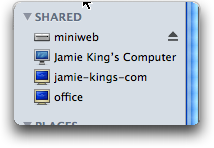Hello I need help! Someone hacked my Apple about three weeks ago when I opened up a port to download a file through IRC Chat and since then I have learned a ton about securing the mac. The first thing I did was reset the NVRAM, Reset the Firmware, Repartitioned the Hard Drive, Zeroed it out seven times, Set a firmware password, Reinstalled the operating system, set a master root password, set up the normal Admin Account and then created my own user account. One of the things that happened was that my Mac Address was released. The reason I no this is the firewall log showed it. Now, I used the terminal command sudo ifconfig en0 ether aa:bb:cc:dd:ee:ff command to create a fake Mac Address for my ethernet card and it worked because my router showed the fake address but here is the problem I have. Since the Mac Address is built into the ethernet card, on the reboot it clears out. How do I install this terminal Command Down in the NVRAM so that it will boot everytime the computer starts up showing the new mac address? Do I install it in the NVRAM or Is there an easier way, maybe create a shell script? If so, how do I write it? How do I install it so on the reboot it is one of the first things to load? Thanks for your help in Advance? Please email me your solution if you have one or post it and send me a link.
Thanks,
macsrules
Thanks,
macsrules


